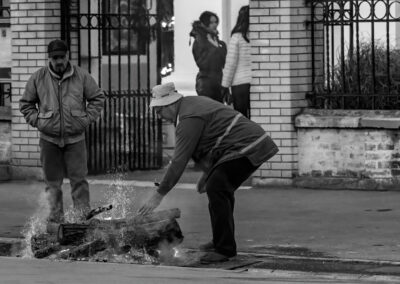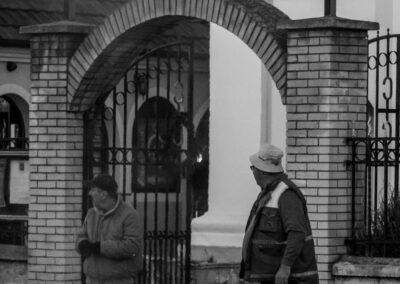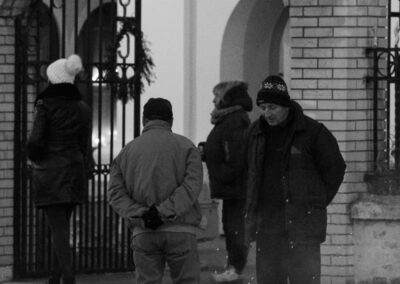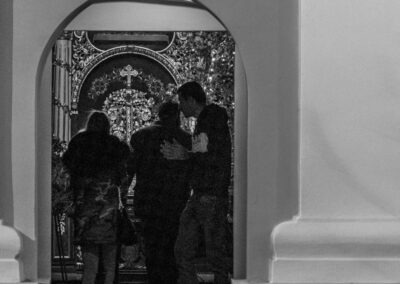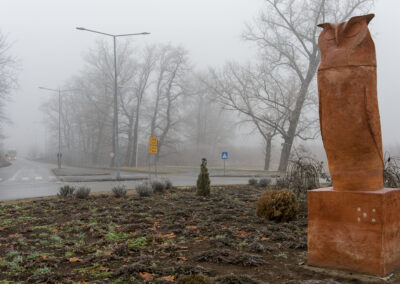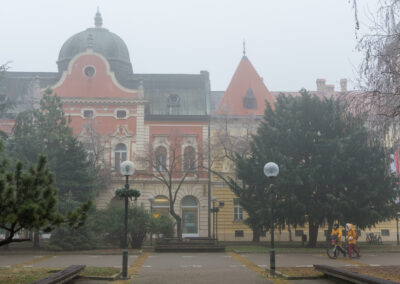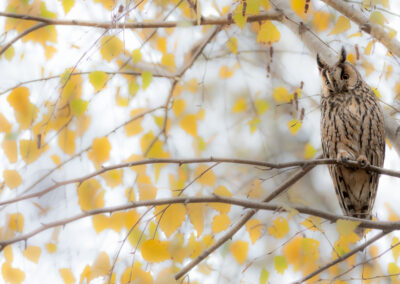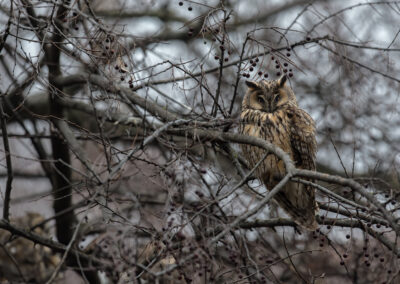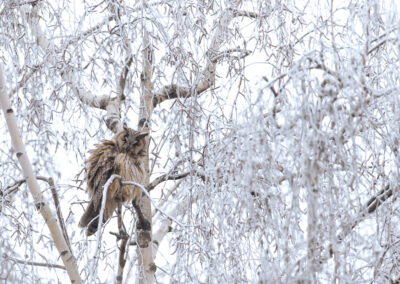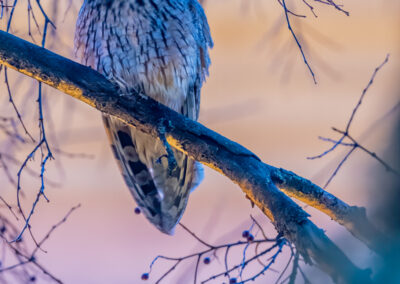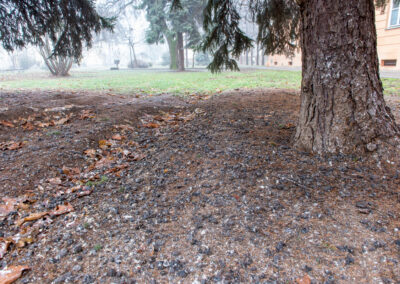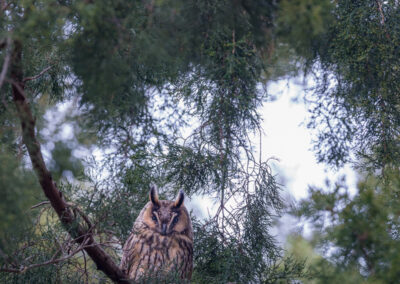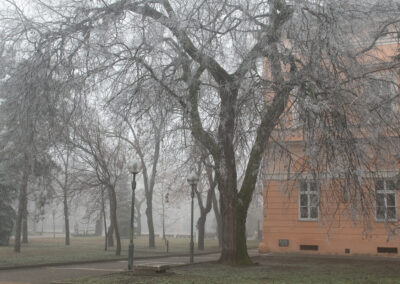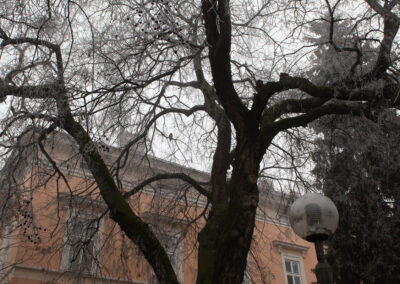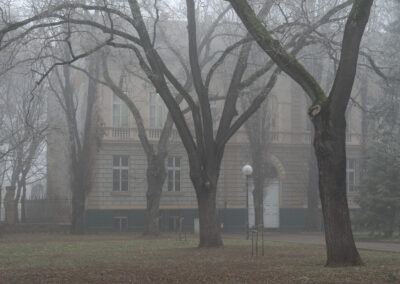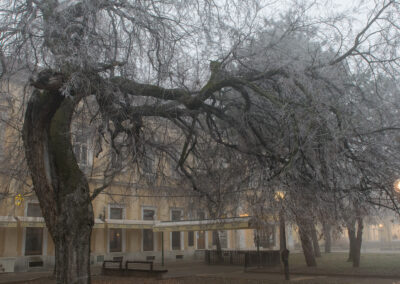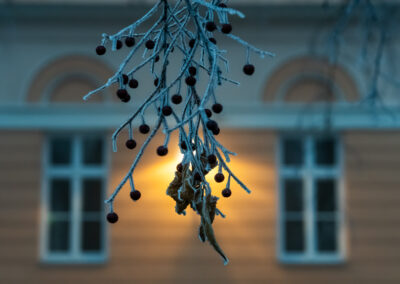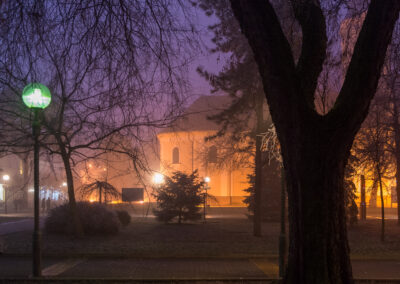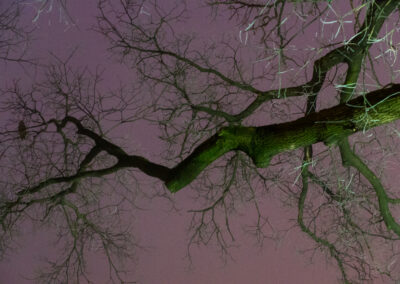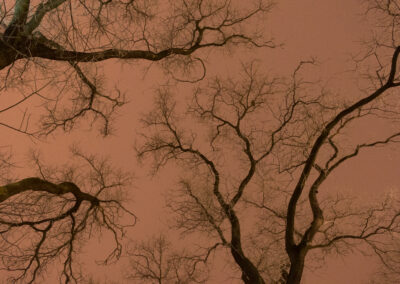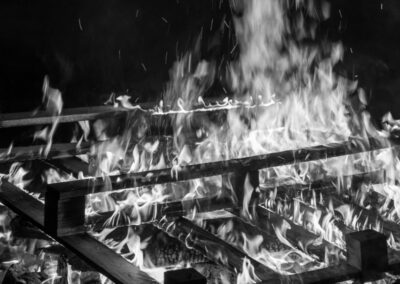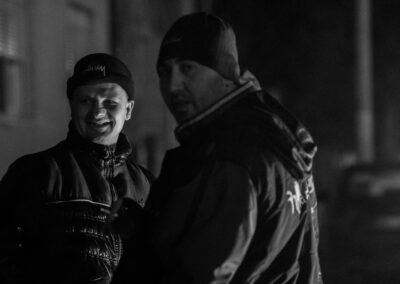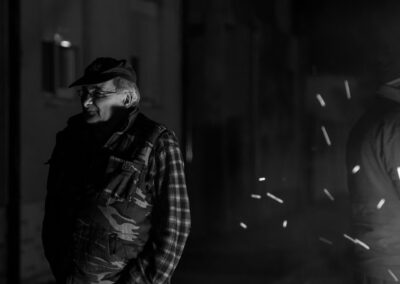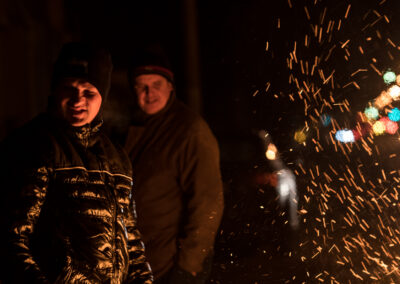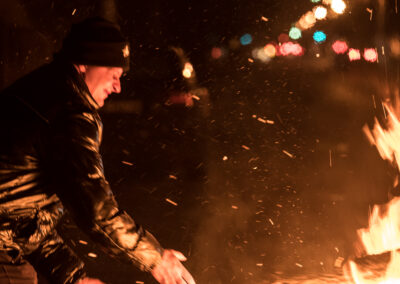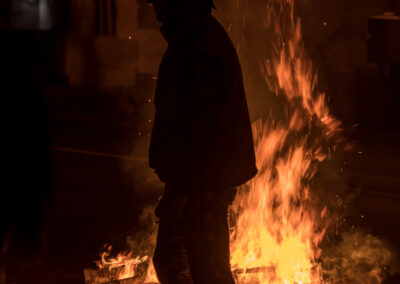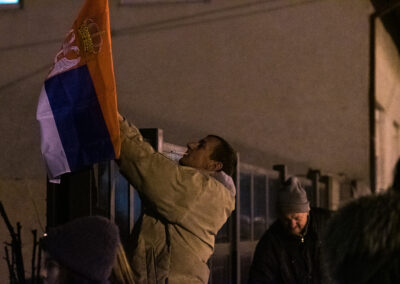Back to Stories
In the deep north of Serbia there is a small and very pretty town with a Disney-esque name: Kikinda. This place, unknown to most people, becomes the protagonist of a unique and perhaps inexplicable phenomenon every winter. Hundreds of owls, in a sort of transhumance that is repeated year after year, arrive to garnish the trees of the center, almost taking on the appearance of very large pine cones, adopting it as their home until the end of the cold and harsh winter.
This year I decided to go and see this “miracle” of nature. We are at the beginning of January and, these days, Serbia is completely enveloped in a thick, dark and mysterious fog. On day 6 I decide to undertake the journey in the hope of being able to find the owls and witness this incredible magic.
The journey is made very complicated by the thick fog but the spectacle of the frozen trees and plants at the edges of the roads is truly enchanting. After more than two hours driving my car, using all the possible concentration that is required given the very poor visibility of the day, I cross the line delimited by the writing “Dobrodošli u Kikindu”, welcome to Kikinda.
A little further on, a terracotta statue created by the local sculptor Jovan Blat, representing an owl, announces the now imminent arrival in the central area of the small Serbian town. Having found a place to park the car and, dressed in the warmest sweaters and socks, all I have to do is venture out in search of the “Kikinda owls”. I set off along a road that seems to lead to the heart of this apparently pleasant place, albeit anthropized and colonized by the human species.
While I walk with my boots on my feet, the damp and cold day penetrates into my bones, with the very heavy backpack on my shoulder, the binoculars around my neck and with the tripod in my hand I wonder where I will ever be able to find these “magical” creatures also present in the “Harry Potter” saga. I listen, fascinated by a “complicated” language, to say the least, to the few people who talk while walking, visibly cold.
The central street is extremely pretty and the small turrets immediately catch my eye, which look like bell towers, which frame the small historic center. I start wandering around with my head upwards trying to spot some traces of “Asio Otus”. At a certain point I glimpse something on the branches of a birch, so I get closer to take a better look. Yes, it’s them.
The tree is dotted with dozens of owls. I put the tripod on the ground, take off my backpack and get ready to try some shots. The thick branches make it extremely complicated to look for clean and interesting shots but walking back and forth across the deserted square I begin to photograph this splendid phenomenon.
The birds are seen absolutely still, now on a completely bare birch, now on a gigantic tree where the intertwining of branches creates a perfect shelter from the daylight. The shyest ones hide among the branches of the large pine trees which hide them completely from human eyes.
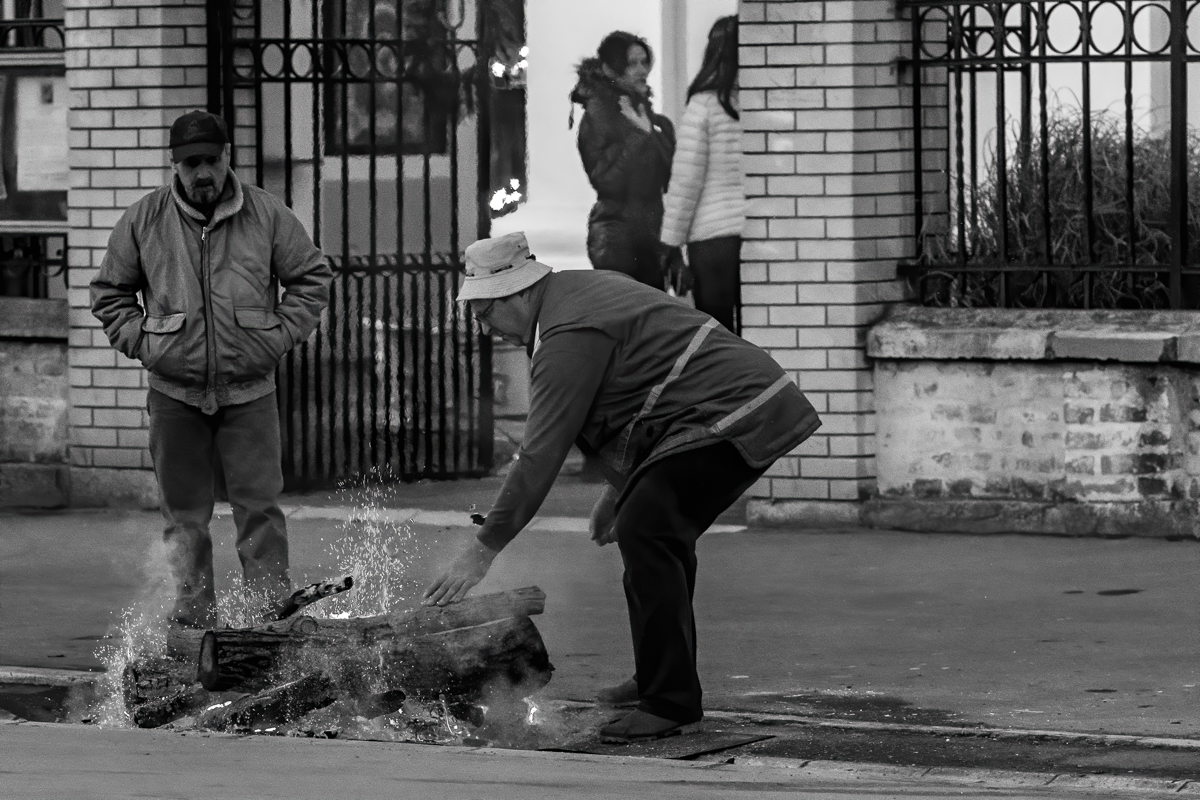
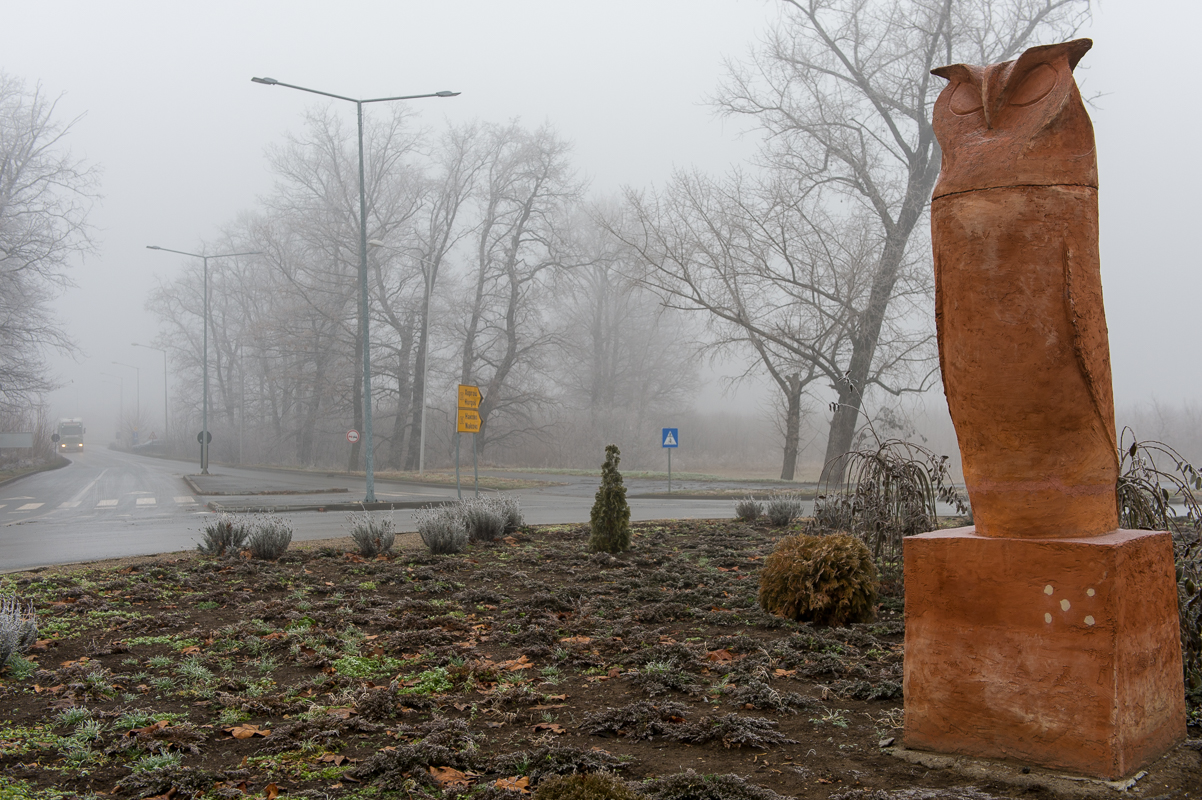
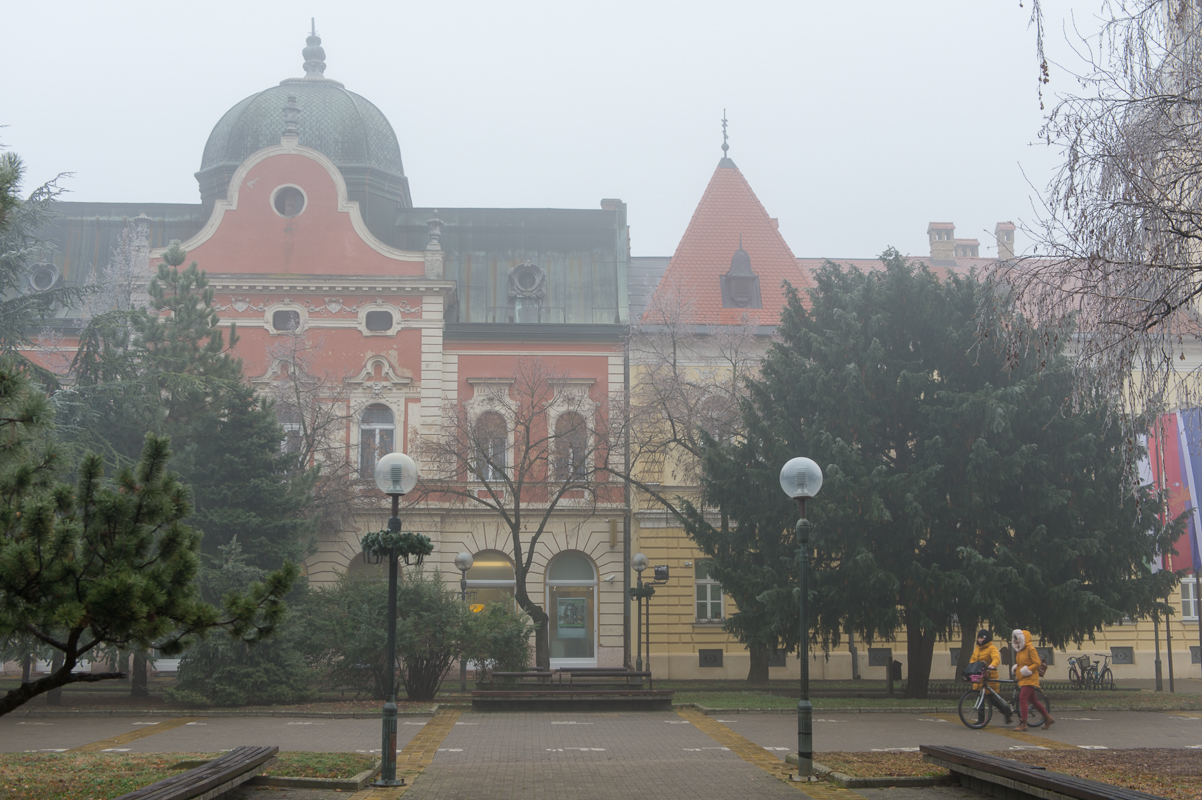
With a little attention, looking closely at the base of the trees, you can notice the wad expelled once the meal is finished, indicating that most likely, even if they are not visible, the branches of the fir tree overlying the area covered in wad are inhabited by dozens of owls and owlets who rest motionless during the day with their big orange eyes half-closed.
The people who pass by me every now and then, seeing me photographing, also raise their heads trying to see what the subjects of my shots are. Sometimes someone tells me something but, unfortunately, in the best of situations, I can only understand a few words. An extremely kind lady, speaking to me in Serbian, makes me understand that there are many of them on a tree a few meters away and I thank her, showing off my best smile and a broken “hvala vam puno”, I thank her very much.
At a certain point three guys approach me and ask me a few questions in somewhat broken English, which I answer willingly until one of them asks me where I’m from. To my response: “I’m from Italy” – I’m Italian – he immediately replies, making me smile, “God brother how are you lost here” – wow what are you doing lost down here.
I’ve been here for several hours now and I’m frozen like a popsicle. Dusk is coming to envelop Kikinda and the owls are slowly starting to wake up. They shake, open their wings, “comb” their feathers with their beak. One at a time they begin to emerge from the most hidden branches of the pine trees, leaning on the branches of the trees nearby.
By now it is dark and some start to fly away in search of some small prey to feed on.
I, like a child, observe the scene with my nose turned upwards, feeling part of this magic that is unique in the world. In some years, over seven hundred owls have been counted among the branches of the Serbian town.
Slowly I walk towards the car to return to where I am staying, over two hours’ drive awaits me and the thick fog has not yet eased.
Tomorrow in Serbia it will be Christmas, Orthodox Christmas. The day before is characterized by a very particular tradition. Many people light a fire in front of their home or on the side of the road, placing an old table outside, a few meters away from the bonfire, on which some drinks, a few glasses and the inevitable “rakija”, the Serbian distillate, appear. which absolutely cannot be absent in the circumstances that “matter”.
Along the road, from time to time, I see some of these fires and the people who, gathered around the fire, chat with a glass in their hand in a moment of aggregation and great conviviality between a handshake, a toast and a hug.
So “Srećan Božić” – Merry Christmas – everyone.

